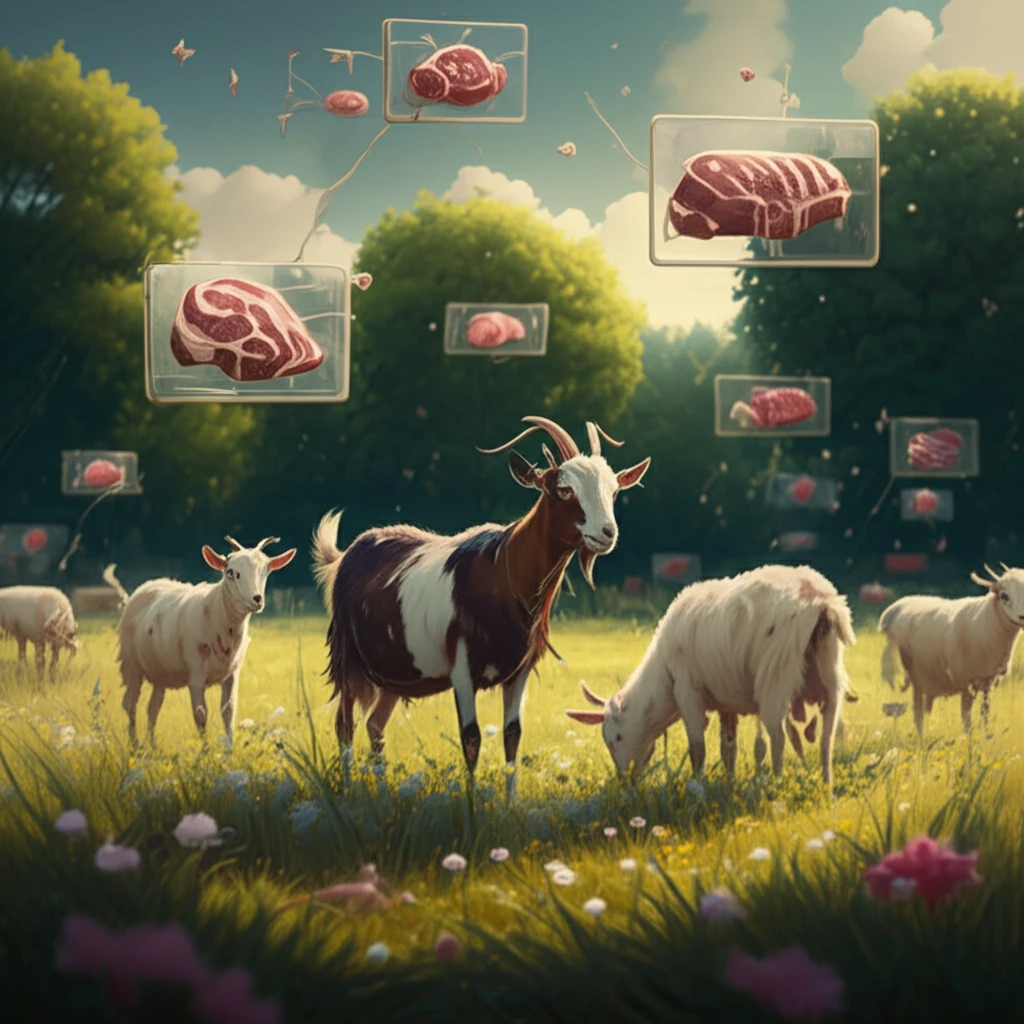
Unlock Better Goat Meat: How Supplementation Can Transform Pasture-Raised Cuts
"Discover the secrets to optimizing tissue composition in goat meat through strategic supplementation. A game-changer for farmers and conscious consumers alike."
In the rolling landscapes of northeastern Brazil, goats stand as a cornerstone of local agriculture. Yet, the unpredictable rainfall patterns of the 'caatinga' present significant hurdles. The scarcity and inconsistent quality of natural forage can drastically affect goat productivity and the quality of their meat. This directly impacts the livelihoods of farmers and the availability of quality protein for consumers.
To counteract these challenges, innovative grazing methods are being explored. Among the most promising is strategic supplementation—the practice of enriching the diets of pasture-grazing animals with protein concentrates, silage, and hay. This approach aims to bridge nutritional gaps and boost both animal yield and carcass quality. But how does supplementation really affect the final product? How does it transform the meat that reaches our tables?
Recent research dives into these critical questions, focusing on the tissue composition of goat meat under different supplementation regimes. The goal is to fine-tune feeding strategies, improving meat quality while supporting the economic sustainability of goat farming in challenging environments.
The Science of Supplementation: Muscle, Fat, and Bone

A groundbreaking study assessed the impact of concentrate supplementation on the tissue composition of commercial cuts from cross-bred F1 goats (Boer × SPRD) raised in native pastures. Twenty-four male goats, around 120 days old and weighing about 15.52 kg each, were divided into four groups. Each group received a different level of concentrate supplementation: 0.0%, 0.5%, 1.0%, and 1.5% of their body weight in dry matter. By the end of the 218-day study, the goats were slaughtered, revealing significant differences in their carcass composition.
- Muscle Boost: Supplementation increased the weight of muscle in all five commercial cuts.
- Fat Factor: Both the weight and yield of fat tissue were boosted by supplementation.
- Ratio Matters: Supplementation decreased the muscle-to-fat ratio, which impacts meat tenderness and flavor.
- No Muscle Proportion Change: The proportion of muscle within each cut remained consistent, regardless of supplementation level.
Transforming Goat Farming: A Path to Premium Meat
This research provides a strong foundation for transforming goat farming practices in regions like northeastern Brazil. By understanding the precise impacts of supplementation on meat composition, farmers can strategically manage their feeding regimes to produce higher-quality, more marketable cuts. This not only enhances their economic prospects but also meets the growing consumer demand for ethically raised, nutrient-rich meat. As the industry embraces these findings, expect to see better quality goat meat gracing our tables, supporting both rural communities and conscious consumers.
